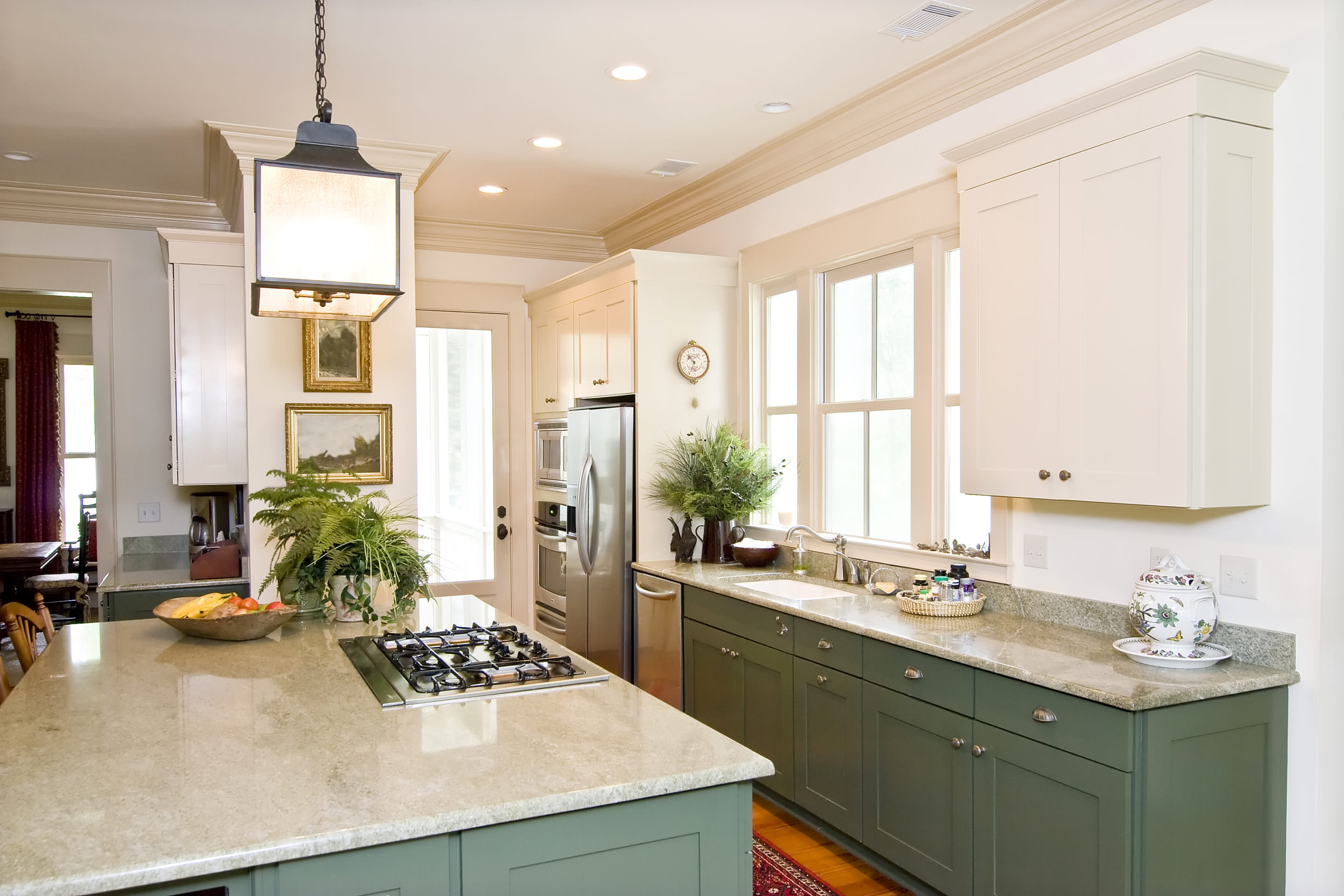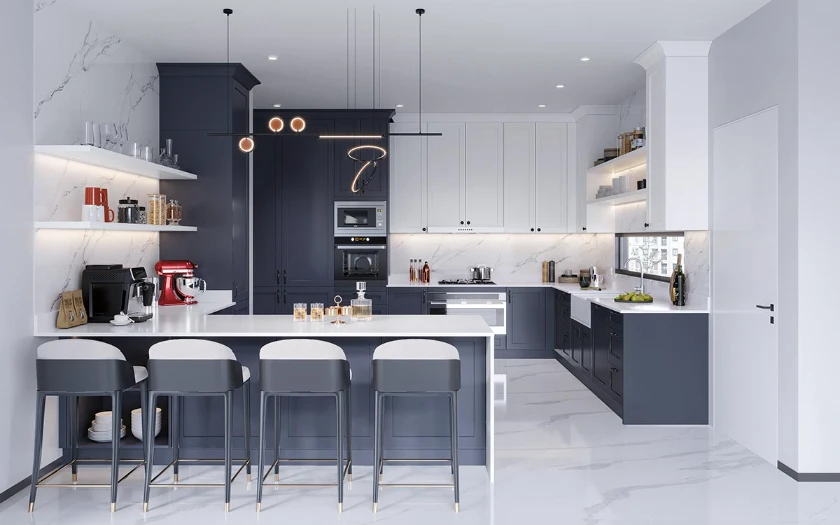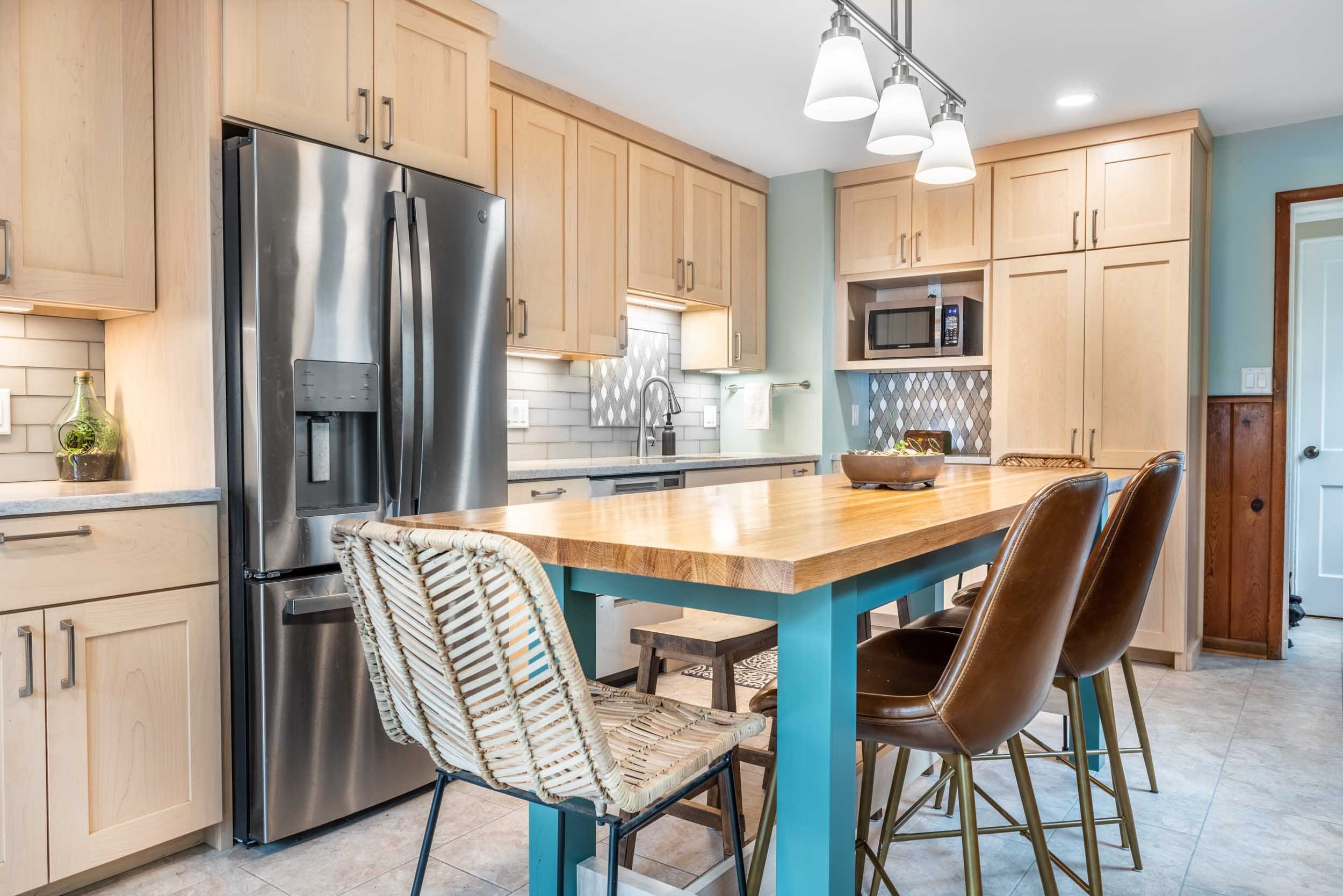To refinish oak kitchen cabinets, start by emptying the cabinets and removing the hardware. Then, sand the cabinets to remove the existing finish and smooth the surface.
After that, apply a coat of primer and let it dry before applying a coat of paint or stain in the color of your choice. Lastly, reinstall the hardware and put everything back in place. Refinishing oak kitchen cabinets involves a few steps, including sanding, priming, and painting or staining, but it can give your kitchen a fresh new look.
With the right materials and some patience, you can transform your old oak cabinets into a beautiful focal point in your kitchen.

Credit: certapro.com
Assessment And Preparation
Assessment and Preparation are key steps in refinishing oak kitchen cabinets to achieve a refreshed look and feel. Before diving into the process, it’s crucial to evaluate the current condition of cabinets and gather necessary supplies.
Evaluate The Current Condition Of Cabinets
- Inspect for any damage or wear-and-tear on the cabinet surface.
- Check for existing finishes, such as paint or varnish, that may need to be removed.
Gather Necessary Supplies And Tools
- Sandpaper: Various grits for sanding the cabinets.
- Wood filler: To repair any chips or dents in the wood.
- Painter’s tape: To protect areas you don’t want to refinish.
- Stain or paint: Your choice of finish for the cabinets.
- Paintbrushes or rollers: For applying the new finish.
By thoroughly assessing the condition of your oak kitchen cabinets and gathering the necessary supplies and tools, you are setting a solid foundation for a successful refinishing project. Next, you’ll move on to the preparation phase before beginning the actual refinishing process.
Preparing The Workspace
Set up your workspace for refinishing oak kitchen cabinets by clearing the area, protecting floors with drop cloths, and ensuring proper ventilation. Organize tools and materials beforehand to streamline the process and avoid disruptions. A well-prepared workspace is key to a successful cabinet refinishing project.
Protecting Surrounding Areas
Before you begin refinishing your oak kitchen cabinets, it’s crucial to protect the surrounding areas in your workspace. Dust and paint splatters can be messy and difficult to clean up, so taking the necessary precautions will save you time and effort in the long run. Start by removing any valuable or delicate items from the immediate vicinity of your cabinets to prevent accidental damage. You can then cover the countertops and floors with plastic sheeting or drop cloths to create a barrier between the cabinets and the rest of your kitchen. By safeguarding these areas, you can focus on the task at hand without worrying about difficult-to-remove stains or spills.
Setting Up A Well-ventilated Workspace
Proper ventilation is crucial when refinishing oak kitchen cabinets, as the fumes from the paint or stain can be overwhelming and potentially harmful. Ensure that your workspace is well-ventilated, allowing fresh air to circulate and preventing a buildup of toxic vapors. If possible, open windows and doors to create a draft, and use fans to further facilitate air movement. It’s also advisable to wear a mask or respirator to protect yourself from inhaling any harmful substances. Taking these precautions will not only ensure your safety but also contribute to a more pleasant working environment.
Stripping And Sanding
When refinishing oak kitchen cabinets, the process of stripping and sanding is crucial to achieve a smooth and professional-looking result. By carefully removing the old finish and meticulously sanding the surfaces, you can restore the natural beauty of the oak and prepare it for a new finish that will revitalize your kitchen. Let’s dive into the specifics of these essential steps.
Removing Old Finish
To start the refinishing process, removing the old finish from the oak kitchen cabinets is the initial step. This can be achieved by using a chemical stripper or by sanding. Chemical strippers are effective for cabinets with intricate designs or carvings, allowing the product to penetrate the nooks and crannies where sandpaper might not reach. Ensure to follow the manufacturer’s instructions when using a chemical stripper, as well as taking appropriate safety precautions, such as using gloves and working in a well-ventilated area.
Sanding The Surfaces For A Smooth Result
Once the old finish has been removed, the next step is to sand the surfaces to create a smooth and even base for the new finish. Begin by thoroughly sanding the cabinets with a coarse-grit sandpaper to eliminate any remaining finish, rough patches, or imperfections. Next, progress to a finer grit sandpaper to achieve a silky-smooth surface. Be sure to carefully sand all areas, including the cabinet doors, frames, and any exposed sides, paying attention to details such as corners and edges to ensure an even finish. The goal is to create a surface that is ready to absorb the new stain or paint evenly, providing a professional and long-lasting result.
Staining Or Painting
One of the crucial decisions when refinishing oak kitchen cabinets is whether to stain or paint them. Both options can dramatically transform the appearance of your cabinets, each with its unique benefits and considerations. Let’s delve into the details of choosing the right stain or paint and applying the finish evenly.
Choosing The Right Stain Or Paint
When deciding between staining or painting your oak kitchen cabinets, it’s essential to consider the overall style and look you want to achieve. Staining can enhance the natural beauty of oak, allowing the grain to show through for a more rustic and traditional appearance. On the other hand, painting provides a myriad of color options, enabling you to match the cabinets with your kitchen’s design scheme.
To choose the right stain or paint, consider factors such as the existing color of the cabinets, the desired final look, and the overall aesthetic of your kitchen. Make sure to obtain swatches or samples to test and compare different options against your existing kitchen decor.
Applying The Finish Evenly
Once you’ve selected the appropriate stain or paint, the next crucial step is to ensure an even application for a professional-looking finish. Whether staining or painting, follow these tips to achieve a consistent and appealing result:
- Thoroughly clean and sand the cabinets to provide a smooth and even surface for the finish.
- Use high-quality brushes or sprayers to apply the stain or paint evenly across all surfaces.
- Allow each coat to dry completely before applying the next layer to prevent streaks or uneven coverage.
- Consider using a protective topcoat to seal and protect the finish from everyday wear and tear.
By adhering to these guidelines, you can effectively refinish your oak kitchen cabinets, whether you opt for staining or painting, to achieve a stunning and durable result that breathes new life into your kitchen space.
Adding Hardware And Finishing Touches
Enhance the look of your oak kitchen cabinets by adding new hardware and finishing touches. Consider replacing outdated knobs and pulls with modern, sleek options for an instant upgrade. Adding new hinges and a fresh coat of varnish or paint can also breathe new life into your cabinets, creating a polished and updated appearance.
The final steps of refinishing your oak kitchen cabinets involve adding hardware and finishing touches. By installing new hardware and paying attention to those important finishing details, you can truly transform the look and feel of your kitchen. In this section, we will discuss how to install new hardware for a refreshed look and add those final touches for a polished appearance.
Installing New Hardware For A Refreshed Look
To give your oak kitchen cabinets an updated and refreshed look, installing new hardware is a simple yet effective solution. Follow these steps to complete the task:
- Start by removing the existing hardware from your cabinets, using a screwdriver to unscrew any screws.
- Measure the distance between the holes of the old hardware. This will help you ensure proper alignment when installing the new hardware.
- Choose the type of hardware that suits your style and complements your kitchen. Consider options like knobs or pulls, and be sure to select a finish that coordinates well with the color and style of your cabinets.
- Using the measurements you took earlier, mark the position for the new hardware on each cabinet door or drawer front. Ensure that the positions are consistent across all cabinets.
- Drill holes in the marked positions for the new hardware using an appropriate drill bit size. Be careful to drill straight and avoid going too deep.
- Once the holes are drilled, carefully attach the new hardware using screws that are the appropriate length.
- Repeat this process for each cabinet door and drawer front, ensuring that the new hardware is securely fastened.
- Take a step back and admire the refreshed look of your oak kitchen cabinets with the new hardware in place. It’s amazing how such a small change can make a big impact.
Adding Final Touches For A Polished Appearance
To ensure that your refinished oak kitchen cabinets look polished and complete, here are a few final touches to consider:
- Apply a clear top coat or protective finish to the cabinets to seal the wood and enhance durability. This will also give your cabinets a smooth, shiny appearance.
- Consider adding trim or molding around the edges of your cabinets for a more decorative and finished look.
- Replace any worn-out or damaged hinges, ensuring that they are properly aligned and functional.
- Take the time to clean and polish the exterior surfaces of your cabinets, paying attention to any fingerprints or smudges.
- Organize and arrange the items inside your cabinets in an aesthetically pleasing and functional way. Consider using drawer organizers and shelf liners to maximize space and protect your cabinet interiors.
- Finally, step back and admire the beautiful results of your hard work. Your refinished oak kitchen cabinets now have a fresh new look and a polished appearance that will surely impress.
By following these steps and adding new hardware and finishing touches to your oak kitchen cabinets, you can achieve a transformed space that looks sleek and rejuvenated. Enjoy the renewed beauty and functionality of your kitchen with this simple and satisfying project.

Credit: www.oppoliahome.com
Maintaining Your Refinished Cabinets
Learn how to maintain your refinished oak kitchen cabinets with these simple tips. Keep them looking clean and fresh by using gentle cleaners, avoiding abrasive materials, and regularly removing grease and grime.
Maintaining Your Refinished Cabinets
Cleaning And Maintaining The Cabinets
After refinishing your oak kitchen cabinets, proper cleaning and maintenance are essential for their longevity.
Regularly wipe down the cabinets with a damp cloth to remove dust and grime.
Protecting The Refinished Surfaces For Long-term Durability
Protect the refinished surface by using gentle cleaners and avoiding harsh chemicals.
Apply a protective finish to shield the cabinets from scratches and wear.

Credit: degnandesignbuildremodel.com
Frequently Asked Questions On How To Refinish Oak Kitchen Cabinets
How Can I Refinish Oak Kitchen Cabinets?
To refinish oak kitchen cabinets, start by removing the cabinet doors and hardware. Clean the surface and sand the cabinets to remove the old finish. Apply a new stain or paint, and finish with a protective coat for a fresh look.
What Tools Are Needed To Refinish Oak Kitchen Cabinets?
You will need basic tools such as sandpaper, paintbrushes, a screwdriver, and a drop cloth. Additionally, consider using a power sander for efficiency and precision. Having the right tools will make the refinishing process smooth and hassle-free.
Can I Refinish My Oak Kitchen Cabinets Without Stripping?
Yes, you can refinish oak kitchen cabinets without stripping by using a gel stain. Gel stains can be applied directly over the existing finish, saving you time and effort. They provide a rich color and even coverage, making the refinishing process easier.
How Long Does It Take To Refinish Oak Kitchen Cabinets?
The time to refinish oak kitchen cabinets varies based on the size of the project and the drying times of the products used. Typically, the process can take anywhere from a few days to a week. Allow sufficient time for each coat to dry properly for best results.
Conclusion
Refinishing oak kitchen cabinets can be a rewarding DIY project that brings new life to your space. By following the step-by-step process outlined in this blog post, you can achieve professional-looking results. Remember to properly prepare the cabinets, choose the right materials, and take your time throughout the process.
With patience and attention to detail, you can transform your kitchen and enjoy the beauty of freshly refinished oak cabinets for years to come.

Sohel Rana is a seasoned author whose passion for home and kitchen essentials permeates through his writing. Born and raised in a small town nestled amidst lush greenery, Rana’s fascination with the intricacies of domestic life blossomed from an early age. His upbringing in a close-knit family environment instilled in him a deep appreciation for the importance of a well-equipped kitchen and a cozy home

